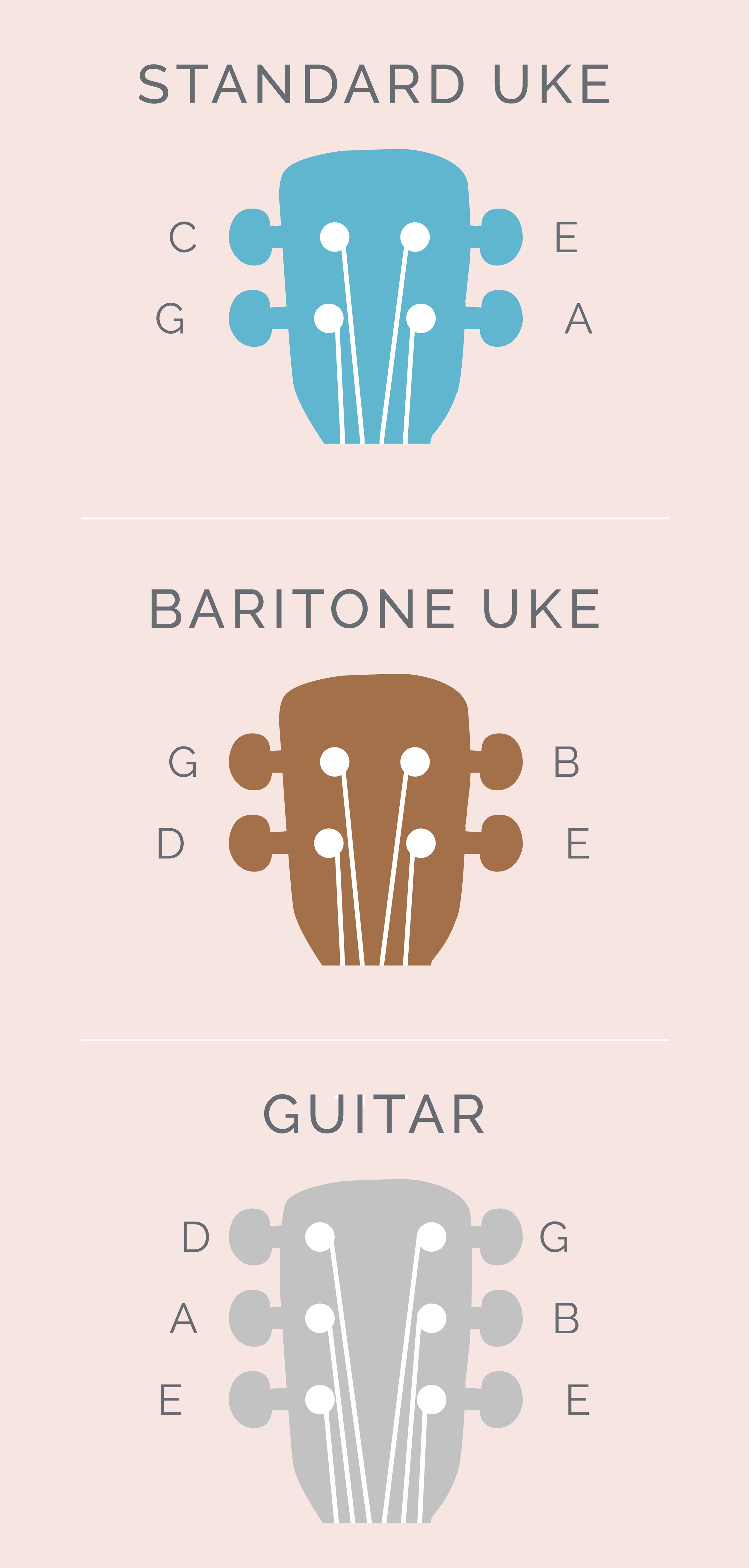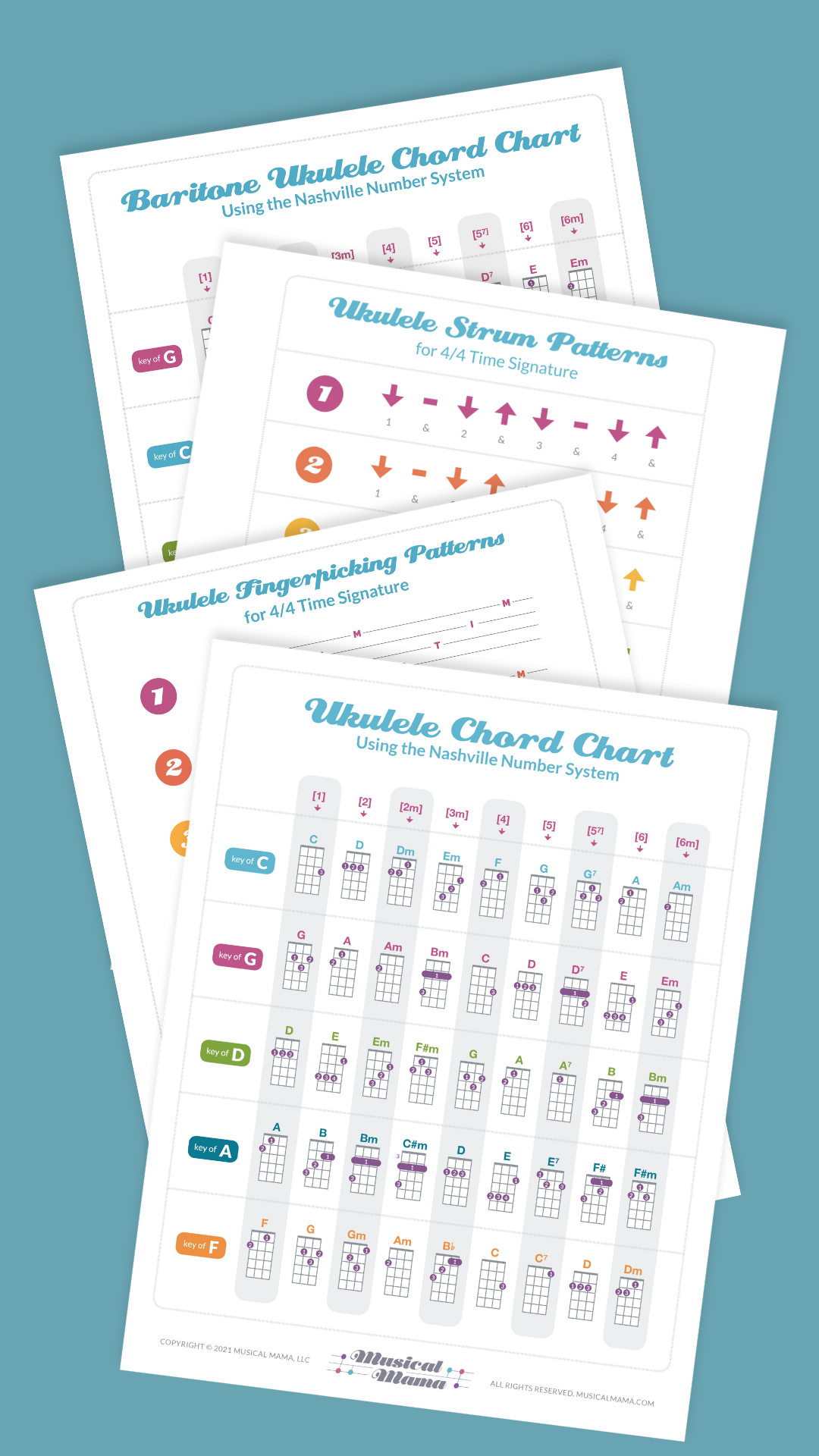The baritone ukulele is a delightful instrument that combines the accessibility of the ukulele with the sound of a guitar. Like standard ukuleles, baritone ukuleles have four strings but with a tuning that’s similar to a guitar. Let’s compare the three:
Ukuleles in standard tuning get their strings tuned to the notes G, C, E, and A.
A guitar gets its strings tuned to the notes E, A, D, G, B, and E.
A baritone ukulele gets its strings tuned to D, G, B, and E, just as the top four strings of the guitar. This tuning gives you a much more guitar-like sound but on an instrument that is as playable as a standard ukulele.
Understanding the Relationships Among the Strings
Though baritone ukuleles have their strings tuned to different notes than a standard ukulele, there is the same number of notes between the strings. For instance, there are the same number of notes between G and C, C and E, and E and A (GCEA tuning) as there are between D and G, G and B, and B and E (DGBE tuning).
Because we are traveling the same distance of notes to get from string to string, the chord shapes for the baritone ukulele look very familiar! Check out the video to learn the three most important chords for playing in the key of G on the baritone ukulele, and strum along as I play two beginner-friendly folk songs.






